Do you want hot water or room temperature water for wet filter paper?
Most friends will wet the filter paper before brewing coffee, the main purpose of this action is to make the filter paper more close to the filter cup, so as to prevent the hot water from infiltrating directly into the next pot; the second is to reduce the amount of coffee liquid absorbed by the filter paper in the steaming stage; and it is rarely mentioned to taste the filter paper.
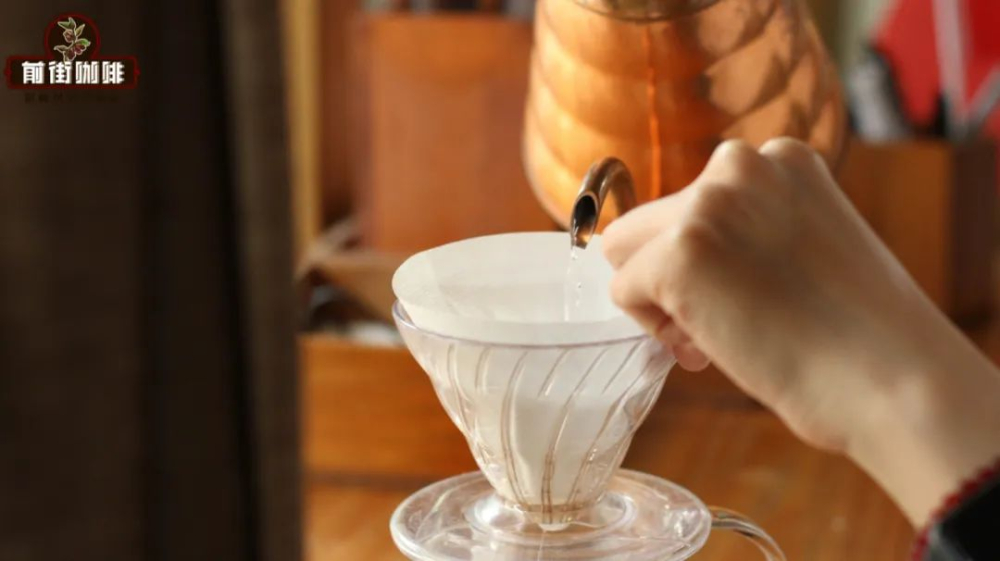
So, I believe that friends who have the habit of wet filter paper will have such a question: should I use hot or room temperature water for wet filter paper?

The reason for this doubt is that many utensils can bring a lot of different changes to the coffee after being heated, such as the brewing handle of the Italian coffee machine, which will make the extracted concentrate with a richer aroma after heating; or coffee cups and pots can slow down the cooling rate of coffee after heating, and so on! But it is reasonable to say that if the use of hot water wetting filter paper will lead to a change in coffee flavor, then the change must not come from the filter paper, but from the filter cup attached to the filter paper.
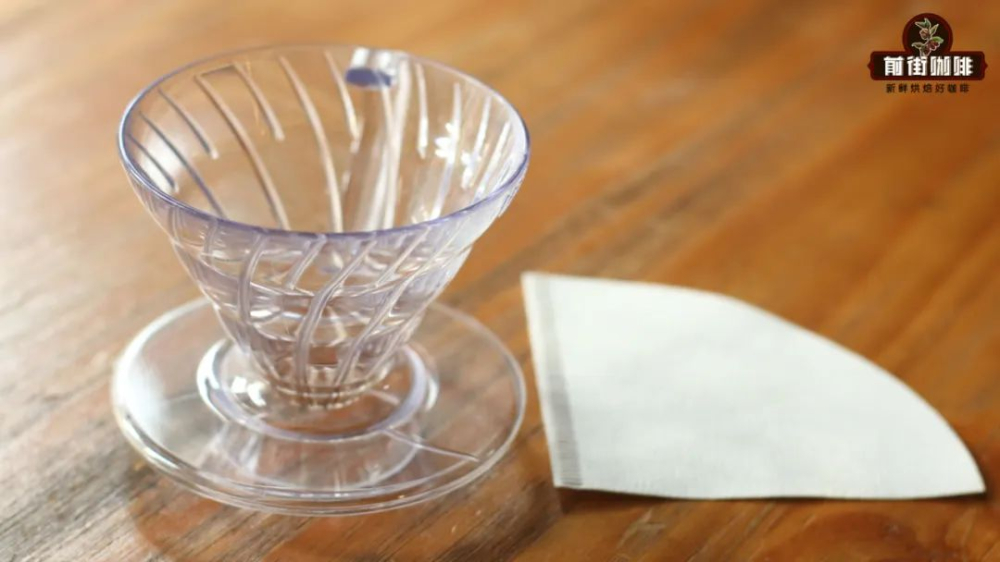
Because the most effect of water temperature on filter paper is deodorization, "filter cup", it will cause a series of flavor changes of coffee because of the influence of water temperature, filter paper can only be regarded as a relationship-building medium. So today, let's do some experiments to see how different the coffee will be when we wet the filter paper with different water temperatures. Compared with Qianjie, this experiment will use filter cups made of resin, ceramic, copper and three different materials to carry out grouping experiments. Each group will use normal temperature water and hot water above 90 °C to wet filter paper to see how the extracted coffee liquid will be different.
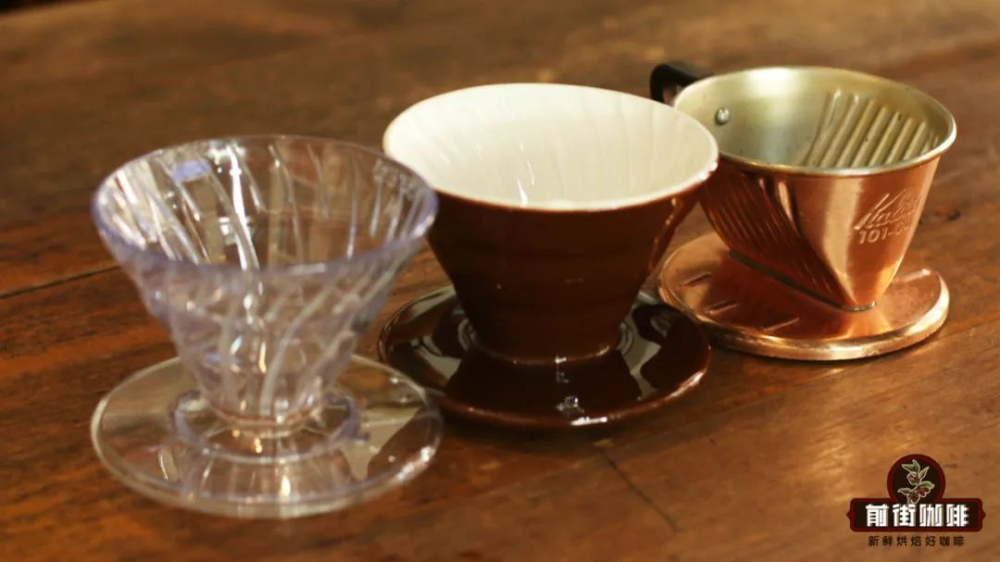
Brewing data: the coffee beans used in this experiment are medium-to-shallow roasted Santavini, Ethiopia, using 15g beans, the proportion of powder to water is 1:15, hot water is 225ml, the water temperature is 92 °C, the EK43 scale is 10, and the cooking method is three-stage. Resin filter cup
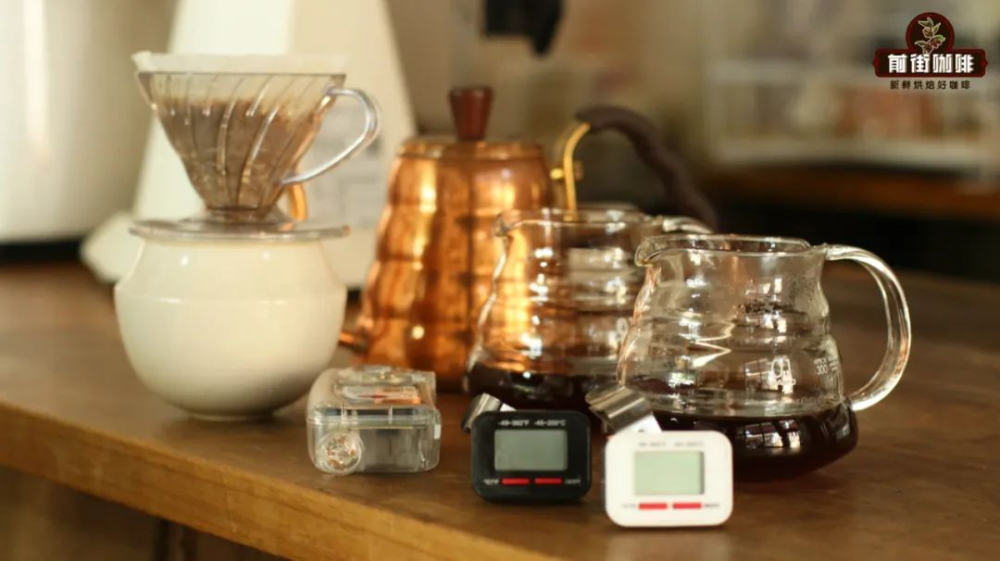
Normal temperature group: the temperature of coffee liquid is 65 °C and the concentration is 14.9%. Hot water group: the temperature of coffee liquid is 67 °C and the concentration is 14.7%. Ceramic filter cup

Normal temperature group: the temperature of coffee liquid was 66 °C and the concentration was 14%. Hot water group: the temperature of coffee liquid is 71 °C and the concentration is 14.4%. Filter cup made of copper
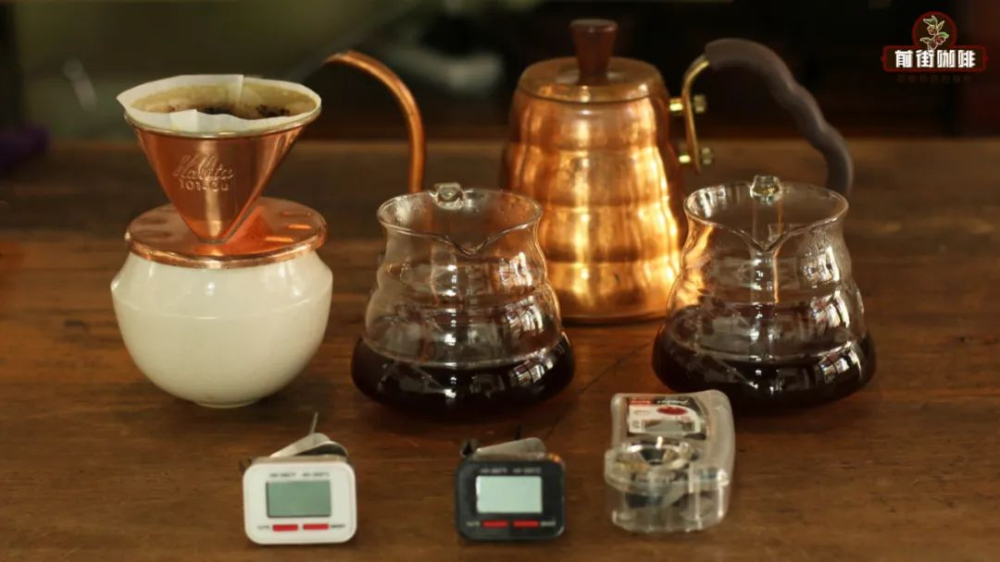
Normal temperature group: coffee liquid temperature is 66 °C, concentration is 14.3% hot water group: coffee liquid temperature is 70 °C, concentration is 14.5% flavor tasting: in flavor performance, all groups are surprisingly consistent: pineapple, mango, citrus. However, the coffee brewed in the normal temperature group has a sweeter flavor, while the coffee brewed in the hot water group has a more active acidity.
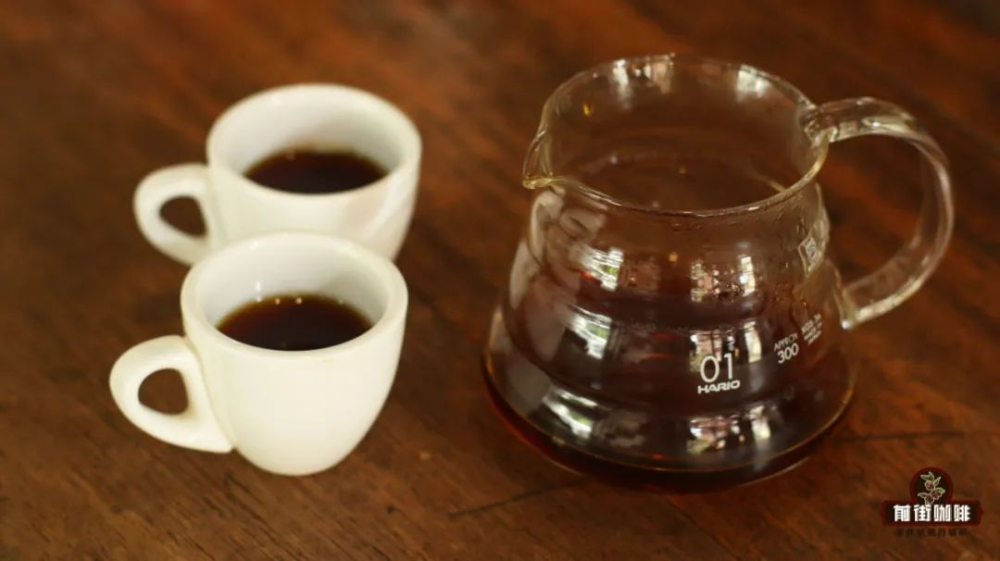
What are the reasons for the difference? When you use hot water to wet the filter paper, as mentioned above, the filter cup will be heated directly and raise the temperature. Then at this time for cooking and extraction, the filter cup not only will not absorb the hot water temperature during steaming, but also can increase a certain extraction rate for cooking. The first thing to be extracted from the coffee is the sour substance, when you step up the extraction in the first paragraph, the sour taste will naturally become more, so the sour taste of the hot water group will be more obvious.
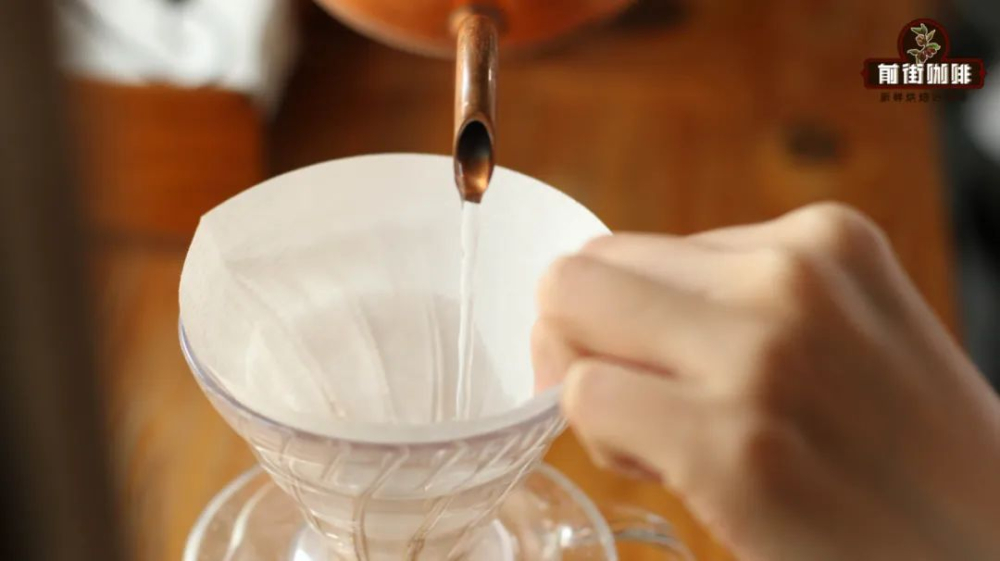
The normal temperature group is just the opposite, because the wet filter paper does not use hot water, so the filter cup and sharing pot are in the normal temperature state. In the steaming stage, the filter cup at room temperature will be the first to absorb part of the heat of steaming hot water, relatively speaking, the extraction intensity will be slightly lower, then the sour substance is not so rich.
As the temperature rises, sweet and sour substances are extracted one after another, because the whole process is a balanced extraction, so after brewing, you get a pot of coffee that is both sour and sweet, which is sweeter than the hot water group.
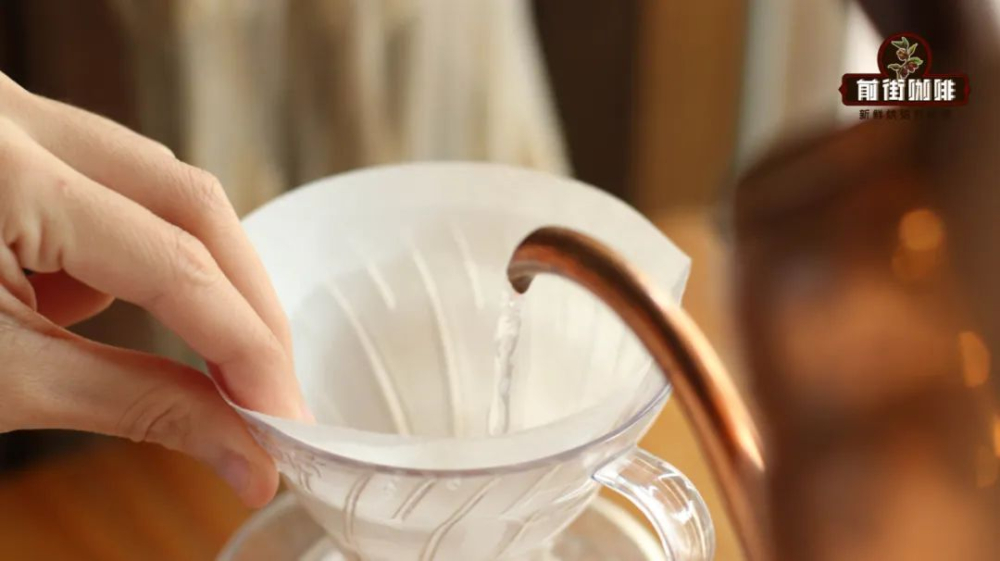
Generally speaking, the water temperature of wet filter paper does change the extraction rate to some extent. Then, for the choice of water temperature, Qianjie will not recommend it. Friends can make decisions out of personal taste. Although the impact is relatively slight, it can be used flexibly, and it can also help you rush out the desired coffee flavor.
-END-
Front Street Cafe
No. 10 Baoqian street, Yandun road, Dongshankou, Yuexiu district, Guangzhou, Guangdong province

Important Notice :
前街咖啡 FrontStreet Coffee has moved to new addredd:
FrontStreet Coffee Address: 315,Donghua East Road,GuangZhou
Tel:020 38364473
- Prev

The real "stuffy steaming"-- how to cook in pine house style?
What is "false steaming" and what is "real steaming"? yes! People are called stuffy steam, how can you be "stuffy" if you don't add a lid? it's a joke! The so-called "real steaming" is actually from Japanese "Matsuya style cooking"! What is pine house cooking? Mr. Yoshiwa Matsushita of Japan
- Next

Why is there no ice Australia white in the coffee shop?
"Bing ao Bai" is a name that baristas will show embarrassed when they hear it, because there is no Bing ao Bai product in regular coffee shops, so when guests mention it, baristas have to explain it to guests accordingly! So, the question is: why is there so little ice in a regular coffee shop?
Related
- Beginners will see the "Coffee pull flower" guide!
- What is the difference between ice blog purified milk and ordinary milk coffee?
- Why is the Philippines the largest producer of crops in Liberia?
- For coffee extraction, should the fine powder be retained?
- How does extracted espresso fill pressed powder? How much strength does it take to press the powder?
- How to make jasmine cold extract coffee? Is the jasmine + latte good?
- Will this little toy really make the coffee taste better? How does Lily Drip affect coffee extraction?
- Will the action of slapping the filter cup also affect coffee extraction?
- What's the difference between powder-to-water ratio and powder-to-liquid ratio?
- What is the Ethiopian local species? What does it have to do with Heirloom native species?

